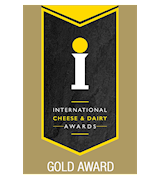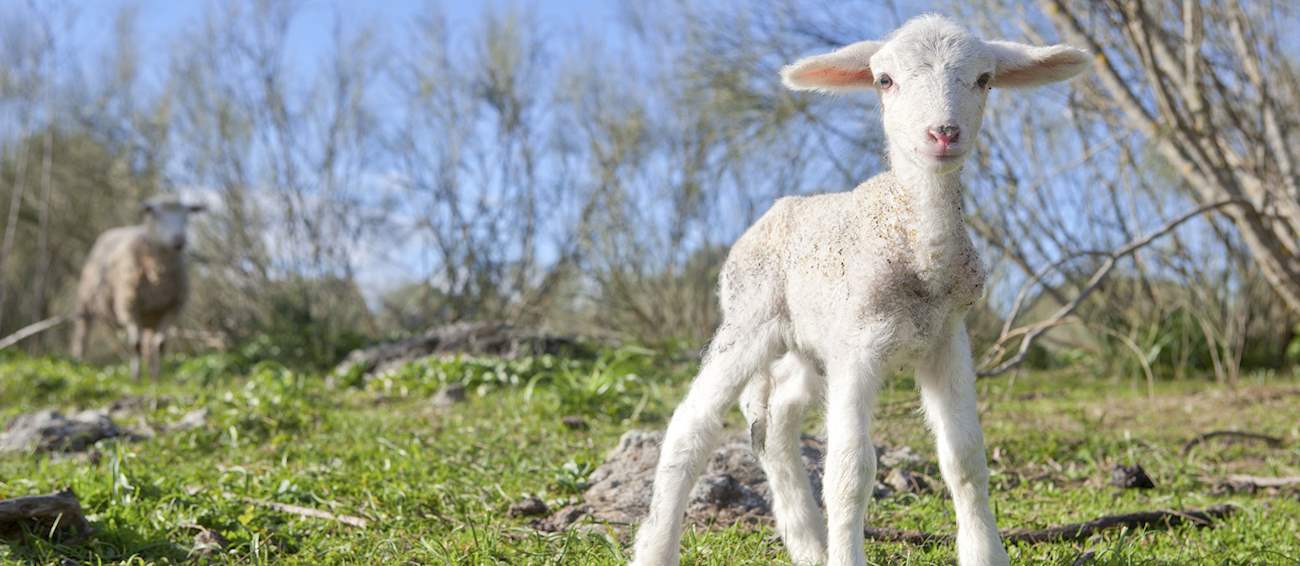TABLE OF CONTENTS
Best European Sheep Types
Paška janjetina is the meat of local lambs historically bred and pastured on the island of Pag. These lambs must weigh from 4 to 10 kilograms at the time of slaughter and they must not be more than 45 days old. The lambs are slaughtered mostly between January and March while they are still milk-fed.
This meat is exceptionally tender and juicy with a very mellow taste. Flavorful wild herbs, such as rosemary and sage, that grow on the island give this meat a distinctive flavor and character. Lamb from Pag is one of the most famous Croatian dishes and is traditionally grilled or roasted, served with a side of potatoes.
Cordero de Extremadura is a lamb born and pastured in the region of Extremadura. There, sheep are bred and raised according to a strict set of rules and guidelines that ensure that the meat of these lambs is of exceptional quality. The animals graze freely pasturing on the green meadows, and their nutrition is only supplemented with a small portion of straw and grains.
The age of the animals at the time of the slaughter never exceeds 100 days. The meat of Cordero de Extremadura is pale to bright pink and has a relatively low fat content. This meat is extremely juicy and succulent with a pleasant aroma resembling that of wild grasses and herbs that the lambs pasture on.
Lička janjetina is fresh meat originating from the region of Lika in Croatia. The meat is obtained from lambs of the Lika Curly (lička pramenka) breed, and they are fed sheep's milk, cereals, and meadow hay. During the summer, they are put out in open pastures.
The lambs need to be between 90 and 160 days old, with a weight from 22 to 36 kg. Once slaughtered, the carcass ranges from 12 to 18 kg. The meat is bright or intense red in color, with a delicate structure of muscles and firm fat, which is yellowish-white in color.
Arnáki Thassou is lamb coming from local sheep breeds born and reared on the island of Thassos. The animals are mainly free-range, and their diet, consisting of ewe’s milk and local aromatic herbs such as thyme, sage, rosemary, and chamomile, infuses the meat with a unique flavor.
The lamb can be prepared in various ways - spit-roasted, grilled, cooked under the bell, roasted, or skewered - and it is often cooked with other local ingredients, including Thassos olive oil, fresh vegetables, and aromatic herbs. A wide range of traditional lamb specialties such as kleftiko (slow-cooked marinated lamb), lamb stews, souvlaki (skewered lamb), keftedes (lamb meatballs), or kokoretsi (skewered lamb offal) can be enjoyed at many traditional restaurants and tavernas on the island, in villages such as Kazaviti, Theologos, Maries, and Panagia.
This lamb comes from the Bordaleira breed, which has been raised in the districts of Coimbra, Guarda, and Viseu for centuries because of the quality of the milk it produces. The most famous product made with Serra da Estrela milk is Serra da Estrela cheese.
During the summer, these sheep graze on the open meadows where they feed on wild grasses and herbs, while they are usually kept inside during the winter. The meat of the Serra da Estrela is particularly tender, succulent, and juicy, and has a delicate taste and complex aroma.
Jagnięcina podhalańska is lamb aged less than 60 days, from the breeds Polish mountain sheep, colored mountain sheep and Podhale zackels. When slaughtered, the final weight of the carcases must be between 4 and 8 kilograms. The uniqueness of the meat is visible in the light pink color and the is soft, elastic and pliable texture.
Its flavor is delicate and succulent and it holds an aroma similar to that of venison. The young animals feed on their mother's milk and on green fodder, hay and hay silage, resulting in minimal fat content in the meat. They are born and reared in Silesia and Lesser Poland provinces in Poland.
This variety of lambs comes from Merina and Campanifa breeds and cross-breeds between them raised in the districts of Beja, Setúbal, and Évora. This lamb owes its unique mellow flavor to a unique diet mainly consisting of milk and only a small amount of cereals.
The meat is light pink in color and has a wonderfully juicy, tender consistency. It is characterized by its low fat content, which gives it a mild but complex flavor. This lamb is commonly prepared around Easter, and it is usually simply roasted together with potatoes.
Cordero Manchego is a lamb born and pastured in the provinces of Albacete, Ciudad Real, Cuenca and Toledo. These lambs are sixty to ninety days old and must weigh between 22 to 28 kilograms at the time of slaughter. Bred and raised in a way that ensures that the meat as a final product is of exceptional quality, the animals graze freely pasturing on the green meadows and mountains eating wild grasses and herbs that give their meat a characteristic aroma.
During the winter months or when green pasture is unavailable, their nutrition is supplemented with a small portion of straw and grains. The meat of Cordero Manchego is bright pink, and in spite of its low fat content, very juicy and succulent.
Scotch lamb is fresh meat from lambs that are born and reared in Scotland. It can be sold as a whole carcass or fine cuts of lamb - hind, saddle, fore, leg, loin and shoulder. Special attention is paid to the welfare and wellbeing of the animals and strict quality standards in selection of carcasses and the specific meat chilling process.
It should be differentiated from the term "Scottish lamb", which is used to describe any lamb that is born and reared in Scotland, but without the unique PGI certificate. It goes really well with lemon, garlic, red wine, spinach, tomatoes and couscous.
Welsh lamb is meat from sheep breeds that are born and reared in Wales and is firm and white with good color and has a sweet, succulent flavor. It is sold as fresh meat, either as whole body or leg, shoulder, loin, saddle or cutlets. The farmers use natural selective breeding methods so that the leanness and the quality of the meat could be improved.
It goes well with rosemary, anchovies, lemon, polenta, or used in burgers, koftas or prepared as steaks.
TABLE OF CONTENTS
Best European Sheeps
Pecorino allo Zafferano made by Caseficio il Fiorino is a specialty cheese that combines the rich, robust flavors of aged sheep's milk with the delicate, aromatic essence of saffron. This cheese is known for its firm texture, making it ideal for grating over dishes or enjoying as part of a cheese platter.
The saffron threads are carefully blended into the curd, imparting a distinctive golden hue and a subtle spice that complements the natural sweetness of the sheep's milk. The cheese is produced by Caseficio il Fiorino, a well-regarded Italian dairy known for its high-quality, artisanal cheeses crafted with traditional methods.
AWARDS

International Cheese Awards - Gold
2023
TasteAtlas food rankings are based on the ratings of the TasteAtlas audience, with a series of mechanisms that recognize real users and that ignore bot, nationalist or local patriotic ratings, and give additional value to the ratings of users that the system recognizes as knowledgeable. TasteAtlas Rankings should not be seen as the final global conclusion about food. Their purpose is to promote excellent local foods, instill pride in traditional dishes, and arouse curiosity about dishes you haven’t tried.
































































